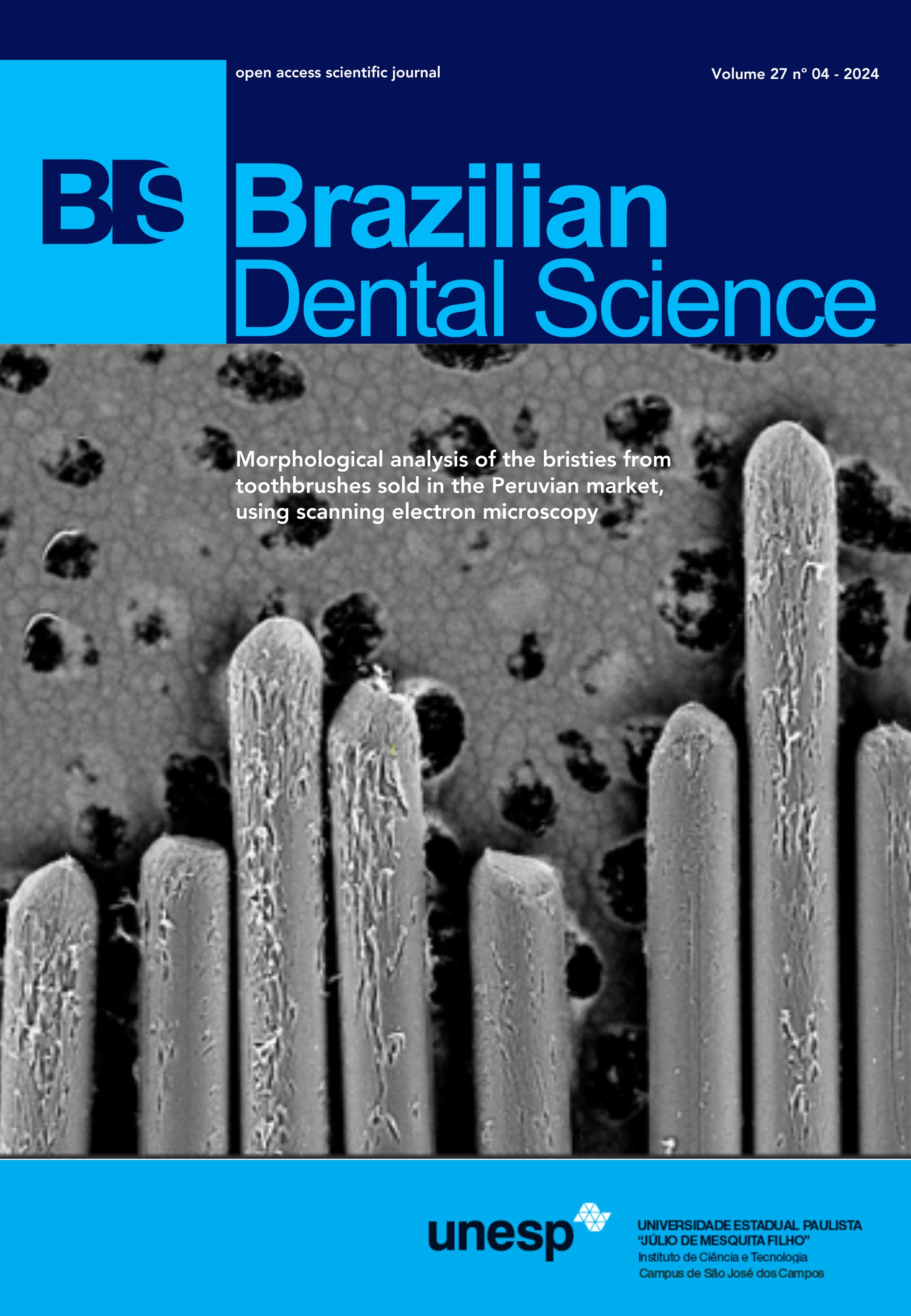Association between painful temporomandibular disorders and psychosocial factors in dental students
DOI:
https://doi.org/10.4322/bds.2024.e4413Abstract
Objective: To establish the association between painful Temporomandibular Disorders (TMD) and psychosocial factors in dental students, using the Diagnostic Criteria for TMD. Material and Methods: This cross-sectional study included dental students of the Universidad Nacional Mayor de San Marcos from the third to tenth cycle. Descriptive and inferential statistical tests were used, including the chi- square, Fisher’s, and t-tests, and multivariate analysis to analyze the results. Results: This study was carried out on 203 students aged 17–48 years; 64.5% were female. Using the TMD pain screener, we found 14.7% and 15.76% of painful TMD in the short and long versions, respectively. Painful TMD was associated with chronic pain (odds ratio [OR: 34.506 and 9.205 for the short and long versions, respectively), moderate depression (OR: 7.545 and 6.301 for the short and long versions, respectively), severe depression (OR: 57.218 and 18.310 for the short and long versions, respectively), and oral habits (OR: 3.146 for the long version). Conclusion: Psychosocial variables may increase the risk for the presence of painful TMD. Moderate and severe depression and oral habits were significantly associated with TMD pain.
KEYWORDS
Chronic pain; Cross-sectional studies; Dental students; Psychology; Temporomandibular joint disorders.
Downloads
Published
How to Cite
Issue
Section
License
Brazilian Dental Science uses the Creative Commons (CC-BY 4.0) license, thus preserving the integrity of articles in an open access environment. The journal allows the author to retain publishing rights without restrictions.
=================




























